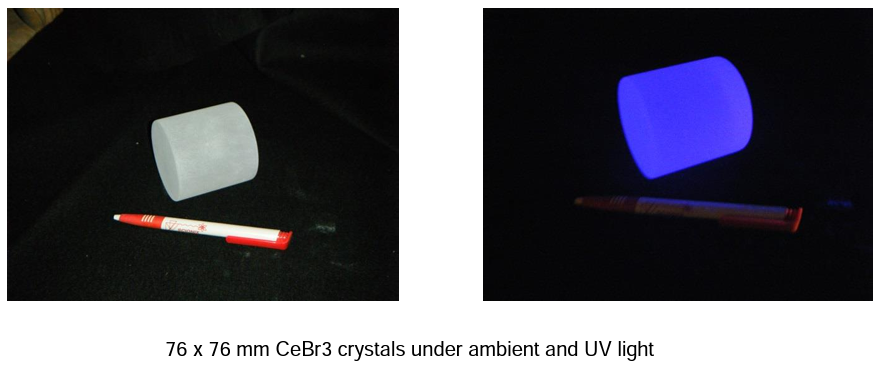October 24, 2023 - Scintillation Detectors: Attenuation Length of Optical Emission
One important aspect of scintillation is how bright the fluorescence is after detecting radiation. Attenuation length or absorption rate in scintillators is defined as the distance light must travel to be reduced to 1/e (37%) of its original intensity. This is a concern for users as attenuation or absorption in the scintillation material can hinder research conclusions and radiation detection. Berkeley Nucleonics does not include a “standard attenuation length” for our scintillators because of the many external factors that influence this. The size of the scintillator, the energy range measured, and material density all influence attenuation length.

For each scintillation material, we guarantee a set energy resolution, and often optical attenuation length is caught via this parameter. For instance, Cerium Bromide (CeBr3) detectors offered by Berkeley Nucleonics are very bright scintillators with a high photon yield. This material is well-defined by its atomic number and density. CeBr3 crystals can be manufactured at a maximum of 152 mm long, with a guaranteed energy resolution of about 4% at 662 keV. The optical attenuation length is caught within this 4% energy resolution. Please refer to Berkeley Nucleonics product datasheets for further information.

Overall, the attenuation length of optical emission is critical and often indicated within a guaranteed energy resolution of a material. We look forward to hearing your applications and equipment requirements. We are open to discussion - Please let us know if you have any questions.
I would like to thank our contributors for this post: Paul Schotanus, Founder of SCIONIX Holland B.V, and Mark Slattery, Nuclear Applications Manager at Berkeley Nucleonics Corporation.
